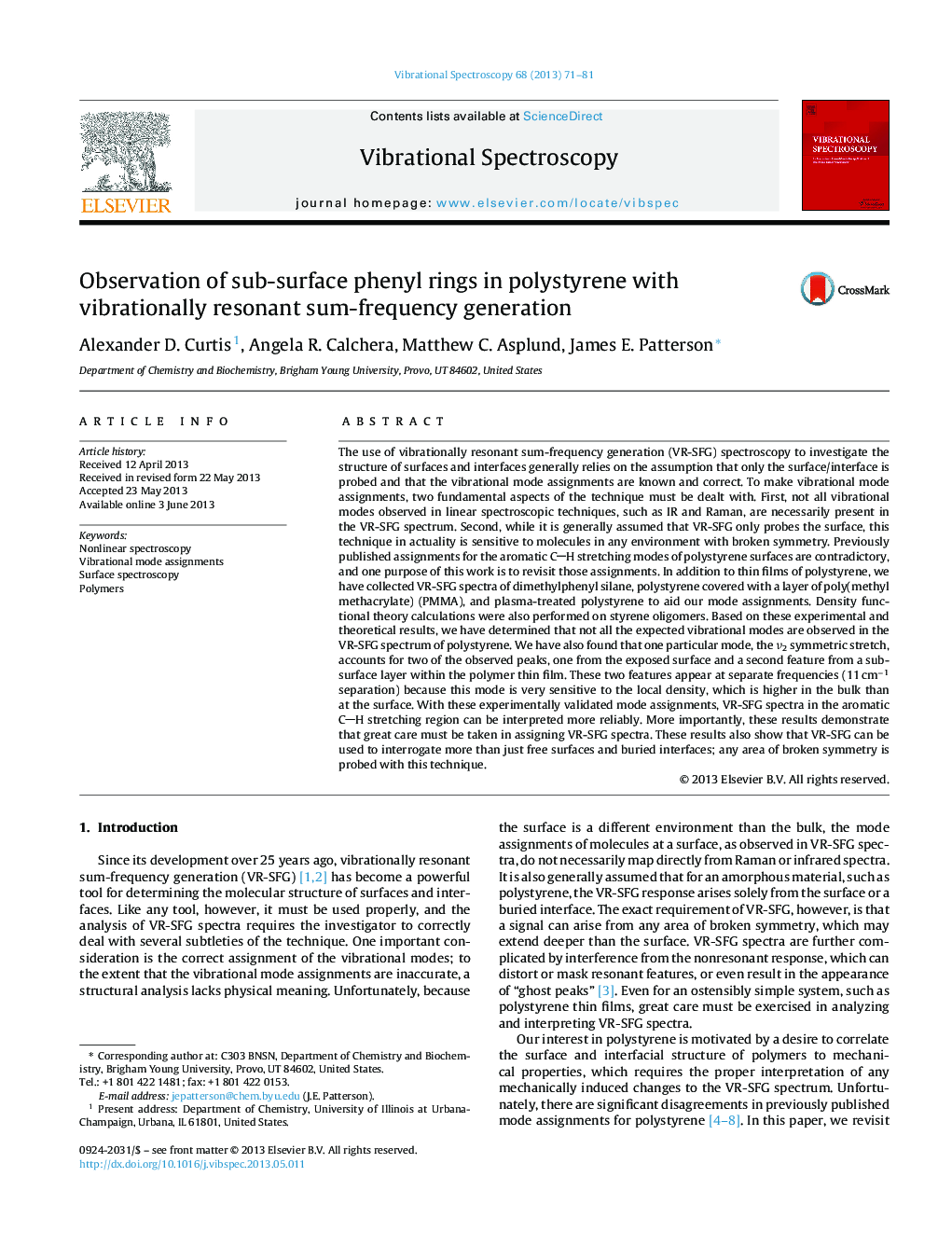| Article ID | Journal | Published Year | Pages | File Type |
|---|---|---|---|---|
| 1250165 | Vibrational Spectroscopy | 2013 | 11 Pages |
The use of vibrationally resonant sum-frequency generation (VR-SFG) spectroscopy to investigate the structure of surfaces and interfaces generally relies on the assumption that only the surface/interface is probed and that the vibrational mode assignments are known and correct. To make vibrational mode assignments, two fundamental aspects of the technique must be dealt with. First, not all vibrational modes observed in linear spectroscopic techniques, such as IR and Raman, are necessarily present in the VR-SFG spectrum. Second, while it is generally assumed that VR-SFG only probes the surface, this technique in actuality is sensitive to molecules in any environment with broken symmetry. Previously published assignments for the aromatic CH stretching modes of polystyrene surfaces are contradictory, and one purpose of this work is to revisit those assignments. In addition to thin films of polystyrene, we have collected VR-SFG spectra of dimethylphenyl silane, polystyrene covered with a layer of poly(methyl methacrylate) (PMMA), and plasma-treated polystyrene to aid our mode assignments. Density functional theory calculations were also performed on styrene oligomers. Based on these experimental and theoretical results, we have determined that not all the expected vibrational modes are observed in the VR-SFG spectrum of polystyrene. We have also found that one particular mode, the ν2 symmetric stretch, accounts for two of the observed peaks, one from the exposed surface and a second feature from a subsurface layer within the polymer thin film. These two features appear at separate frequencies (11 cm−1 separation) because this mode is very sensitive to the local density, which is higher in the bulk than at the surface. With these experimentally validated mode assignments, VR-SFG spectra in the aromatic CH stretching region can be interpreted more reliably. More importantly, these results demonstrate that great care must be taken in assigning VR-SFG spectra. These results also show that VR-SFG can be used to interrogate more than just free surfaces and buried interfaces; any area of broken symmetry is probed with this technique.
